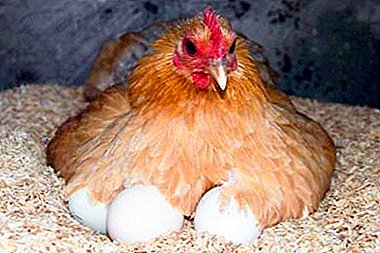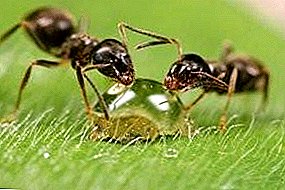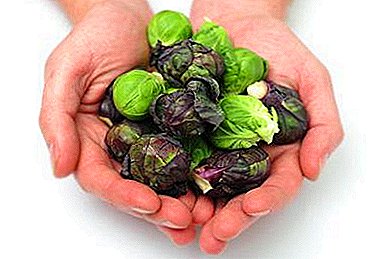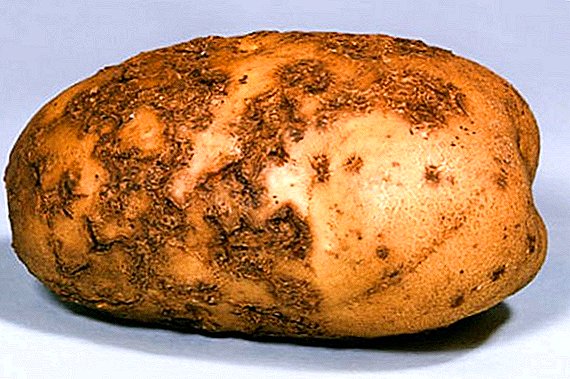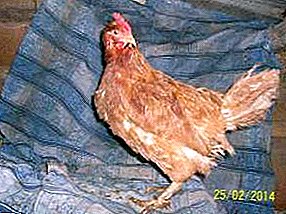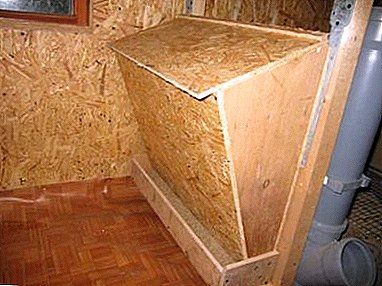
On private plots, the greatest time and financial costs fall on the maintenance of chickens. And 70% of the time and money spent on feeding. It would seem very simple. There is a chicken coop, there are chickens. Enough to put in a bowl of food and chickens will calmly peck him. But it was not there.
It soon becomes apparent that chickens have a need in nature to dig food from the ground, even if it lies in a bowl. They get into a bowl with their feet, turn it over, scatter food around the site. As a result, the feed is trapped, mixed with garbage and excrement, and you have to add it again.
Very soon, the chicken breeder comes to the decision to purchase a bunker trough. This trough significantly saves time and money. Grain does not crumble. It is enough to fill the bunker with food once a day, which is very convenient.
Definition
The bunker feeding trough consists of a closed type bunker where food is poured and a tray from where chickens peck off this food.
On the Internet and specialized journals there are quite a few descriptions and drawings of feeders for self-production in the country.
The most common due to low cost and ease of manufacture of the feeders are:
- Feeding trough of water pipes (about how to make a feeder for chickens with their own hands from the sewer, polypropylene, plastic pipes, read here).
- Plastic-plywood feeder.
- Bucket
Benefits
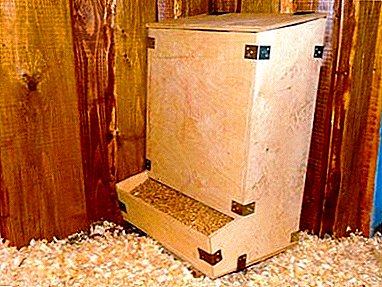 At the same time, several chickens have free access to the feed in the pan. 8-10 cm are given for each chicken. For chickens 4-5 cm is enough.
At the same time, several chickens have free access to the feed in the pan. 8-10 cm are given for each chicken. For chickens 4-5 cm is enough.- Simplicity of design. The trough is used every day, quickly gets dirty and requires regular cleaning and disinfection. The design of any homemade trough is light, portable and can be disassembled without much difficulty.
- Sustainability. So that the chickens do not overturn the feeder and do not scatter the feed, it becomes stable or firmly fixed to the wall
- Closeness. Chickens do not have the opportunity to climb into the bunker with food and scatter it paws.
- Spaciousness. In a feeding trough contains 10-20 kg. feed at the same time, which provides a full day supply for a large number of birds
disadvantages
- Hopper feeders are intended only for dry food. A full-fledged diet of chickens includes wet mash, fresh greens, vegetables and fruits that are not capable of self-sucking from the bunker.
- The need for regular cleaning and disinfection.
Prices in stores
In specialized stores for amateur gardeners and farms you can buy a feeder of industrial production. If you take a cheap Chinese feeder, then it’s just money to be thrown away. Quality automatic may not be affordable for everyone (for details on how to make an automatic chicken feeder with your own hands, you can find out here).
Feeders for 10-20 kg cost 1100-1300 rubles in stores. Prices for automatic feeders for 70 kg reach 10,000 rubles.
More on how to make a chicken feeder from a 5-liter plastic bottle, we told in this material.
Where to start: we make ourselves
From pipes
Before starting work, you should decide what kind of feeder you want to make and for how many birds. The easiest to manufacture is the tube feeder.. The tube feeder has two varieties:
- With holes or slots.
- With a tee.
With holes and slots
 Necessary materials and tools. For the manufacture of feeders with holes or slots, the following materials are needed:
Necessary materials and tools. For the manufacture of feeders with holes or slots, the following materials are needed:
- 2 PVC pipes of 60-150 cm with a diameter of 110-150 mm.
- “Knee” connecting pipes at right angles.
- 2 plugs corresponding to the diameter of the pipe.
One tube serves as a filler hopper. The longer it is, the more feed it will enter. The second pipe serves as a tray from which hens peck grains. A long pipe allows you to make more holes or cuts in it, and more chickens can be fed at the same time.
With tee
For a tee feeder you will need:
- 3 PVC pipes with a length of 10, 20 and 80-150 cm with a diameter of 110-150 mm.
- Tee with an angle of 45 degrees under the pipe of the selected diameter.
- 2 plugs.
- Accessories for mounting the pipe to the wall.
Tools that will be needed for the manufacture of the tray:
- Bulgarian or hacksaw for cutting pipes.
- The electric drill with a drill on a tree and a crown with a diameter of 70 mm.
- Jigsaw.
- File.
- Marker, pencil, long ruler.
Cost of materials:
- PVC pipe D = 110 mm - 160 rubles / m.
- Tee D = 11 mm - 245 rubles.
- Cap-55 rub.
- Knee-50 rubles.
- Clamps for fastening to the wall for 40-50 rubles.
How to make a version with slots?
 The feeder is shaped like a Latin letter L. The vertical tube serves as a feed hopper.. The horizontal tube will be the feeding place.
The feeder is shaped like a Latin letter L. The vertical tube serves as a feed hopper.. The horizontal tube will be the feeding place.
- On a pipe 80 cm long mark the centers of the holes.
- Draw holes D = 70 mm. The distance between the edges of the holes is 70 mm. Holes can be in two rows or in a checkerboard pattern.
- Electric drill with a circular crown D = 70 mm make holes in the pipe.
- We process the holes with a file so that the chickens do not cut themselves on the burrs.
- On one side of the pipe we put on the cap, on the other side the knee.
- We put a vertical pipe into the knee.
- Attach the design to the wall.
How to make a design with a tee?
- On a pipe 20 cm long we dress a cap. This will be the lowest part of the design.
- On the other hand, we dress the tee so that the tap looks up.
- Dress the short pipe 10 cm to remove the tee.
- Insert the remaining 150 cm into the upper opening of the tee.
- Fasten the design to the wall.
You can also see an overview of the construction with a tee and learn how to do it in this video:
From bucket
Required materials:
- Plastic bucket with a lid.
- A partitioned dish is a special bowl for feeding animals divided into sections. The diameter of the bowl should be 12-15 cm larger than the diameter of the bottom of the bucket.
- Instead of a scaler, you can use the bottom of a bucket or barrel of the appropriate diameter.
- Screws screws.
 Prices:
Prices:
- A bowl costs 100-120 rubles.
- A bucket with a lid 60-70 rubles.
- Screws 5 rub.
Algorithm manufacturing:
- In the bucket wall, in the place of contact with the bottom, we cut out the horseshoe-shaped holes according to the number of sectors in the bowl. Feed will be poured from these openings.
- Screws attach the bottom of the bucket to the bowl.
- After falling asleep feed, the bucket is covered with a lid.
- If the structure is small and light, it can be hung up to a height of 15-20 cm from the floor to avoid tipping.
You can also see one of the options for making bunker feeders from a bucket:
From wood
Creating a bunker trough of wood requires more serious preparation. Before you begin, you must make a drawing. Sizes are selected based on the number of chickens in the farm. All paper sizes are transferred to wood.
Necessary materials:
- Wooden boards for the bottom and cover.
- Plywood sheets for side walls.
- Door hinges.
- Nails or screws.
Instruments:
- Saw.
- Drills and drills.
- Screwdriver or screwdriver.
- Sandpaper.
- Roulette.
- Pencil.
 Standard feeder is made with dimensions of 40x30x30 cm:
Standard feeder is made with dimensions of 40x30x30 cm:
- We cut from the board the bottom of 29x17 cm and the cover of 26x29 cm.
- We cut out the plywood side walls with a height of 40 cm and a length of the upper edge of 24 cm and the bottom 29 cm.
- We make of plywood 2 parts for the front wall 28x29 cm and 70x29 cm.
- The back wall is doing 40x29.
- We clean all wooden parts with sandpaper so that no burrs remain anywhere.
- Drill make holes in places of fastening of the structure with screws.
Assembly process:
- Fasten the sides to the bottom with screws.
- Fix the front and rear walls. They should have a slope of 15 degrees.
- The top cover is fixed with door hinges to the back walls of the sidewalls.
- We form a tray from scraps of boards in the front, so that the grain does not spill out.
- All parts are treated with antiseptic. It is impossible to cover the feeder with varnish or paint.
You can also see one of the options for making bunker feeders made of wood:
From the barrel
Production and review of bunker feeders from the barrel can be viewed in this video:
The importance of proper feeding
Bunker troughs do not completely solve feeding problems - they fall asleep and free food. For greens, vegetables and fruits, trough type feeders and water troughs are required for the filling of which should be regularly monitored. For nutrition and development, chickens should receive minerals and vitamins in addition to the necessary proteins, fats, carbohydrates.
For high-quality daily feeding, you can use waste from the kitchen, garden and vegetable garden: potatoes, bread, leaves and tops of vegetables, protein feeds, dairy products, vegetable cake and meal. Chickens are fed 3-4 times a day.
Morning and evening give cereal and dry food. Happy wet mash and greens. A poultry breeder does not need to buy expensive supplements and feed. Everything you need is already on the farm to fully feed the poultry.


 At the same time, several chickens have free access to the feed in the pan. 8-10 cm are given for each chicken. For chickens 4-5 cm is enough.
At the same time, several chickens have free access to the feed in the pan. 8-10 cm are given for each chicken. For chickens 4-5 cm is enough.

